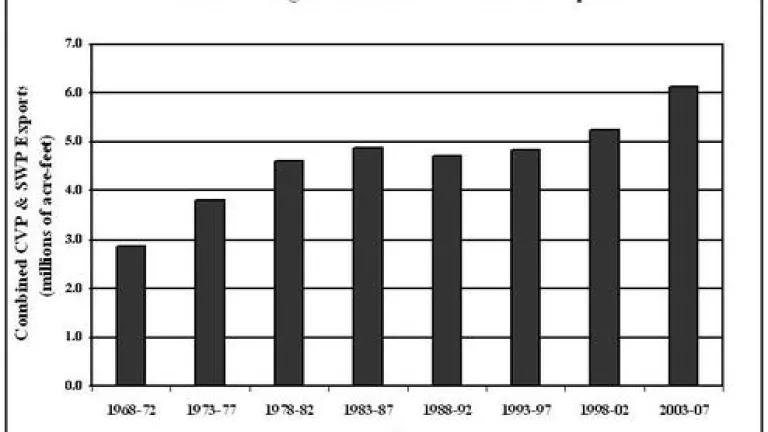
Last week, the San Diego Union Tribune published an editorial on water policy and the Sacramento-San Joaquin Delta. Not only did the editorial get many of the critical facts wrong, but it also perpetuated a superficial theory that California can only protect water or fish. The truth is, California can meet the water needs of both people and fish. But in order to do so, we must invest in a 21st Century water supply system that utilizes efficiency and conservation, what we call the "Virtual River." To do otherwise would be the wrong water policy for the wrong era.
Only a few decades ago, delta smelt were one of the most abundant native fish in the Bay-Delta. Unfortunately, since then the population has crashed to historically low levels. An ambitious multi-agency scientific effort was launched several years ago to investigate all suspected causes of this collapse. This effort supports a growing scientific understanding that the operation of the State and federal water projects in the Delta, which exports more water than any other diversion project in the Western Hemisphere, are one of the most important factors in the decline of the smelt. The giant pumps that export water from the Delta unnaturally reverse the flow of water in the Delta, essentially causing rivers to run backwards. Not only does this dramatically alter the clarity and quality of the water in the Delta, it sucks smelt and their food into the pipes and kills them.
In what must be an editorial oversight, the Tribune's editorial claims that fewer than 10 smelt were caught in the pumps in the past five years. That's off by thousands, according to the State and federal governments. In May of 2008 alone, more than 900 delta smelt were killed by the pumps. And if you go back a few more years, you'll see that more than 9,500 delta smelt were killed by the pumps in January 2003. While it may initially sound good that fewer smelt have been caught in the pumps in recent years, the unfortunate reality is that the reason behind this is there are simply fewer smelt in the delta. And this number only includes the fish that were found in the pumps and counted; recent studies suggest that the vast majority of delta smelt that are sucked into the forebay of the state pumps die without ever being counted.
And it's not just the delta smelt that are on the verge of extinction. Salmon, steelhead, sturgeon, longfin smelt, and other native fish species that live or migrate through the Delta are all in trouble, at least in part because of how poorly we've managed the state and federal water projects in the Delta.
Likewise, the Tribune's editorial claims that the delta smelt protections last year ordered a 31 percent cut in water supply. It is important to note that the protections adopted by the court were actually proposed by the federal agencies, not environmental groups. While the ruling limited pumping during some months of the year, the drought of the past several years, not these protections, is responsible for the majority of the reduced water deliveries this year. And these pumping restrictions must be seen in context; prior to 2000, the state and federal water projects never exported more than 6 million acre feet of water from the Delta, but in recent years, as we have exported more water, we've run into greater environmental problems.
The obvious solution - one that the Governor's Delta Vision Blue Ribbon Task Force, among others, have suggested - is that we need to provide more water for fish, and meet our water supply needs through fish-friendly sources such as water conservation, water recycling, and low impact design that captures stormwater.
We couldn't agree more. California can meet its water supply needs and continue to protect our rivers, and our native fish, by tapping into the "Virtual River" that my colleague Barry Nelson has previously suggested. Data from California's Department of Water Resources shows that by investing in water conservation, efficiency, groundwater cleanup, and low impact design that captures stormwater, we could generate more new water each year than we've ever exported from the Delta in a single year.

.
These alternative water supply tools are cheaper, available today, and yield more water than 20th century solutions like new dams and reservoirs. Plus, they solve other environmental problems at the same time - water conservation, for example, reduces electricity use and can reduce greenhouse gas emissions. And capturing stormwater on site dramatically reduces stormwater runoff, the number one source of coastal water pollution.
This is not about a choice between fish or water - this is about choosing to protect both. Protecting delta smelt not only protects the environment, it also protects farmers and fishermen in the Delta and beyond. We can meet our water supply needs and protect the environment by developing a 21st century water supply system that reduces our dependence on the Delta and invests in sustainable and virtually limitless alternative water supply sources.
